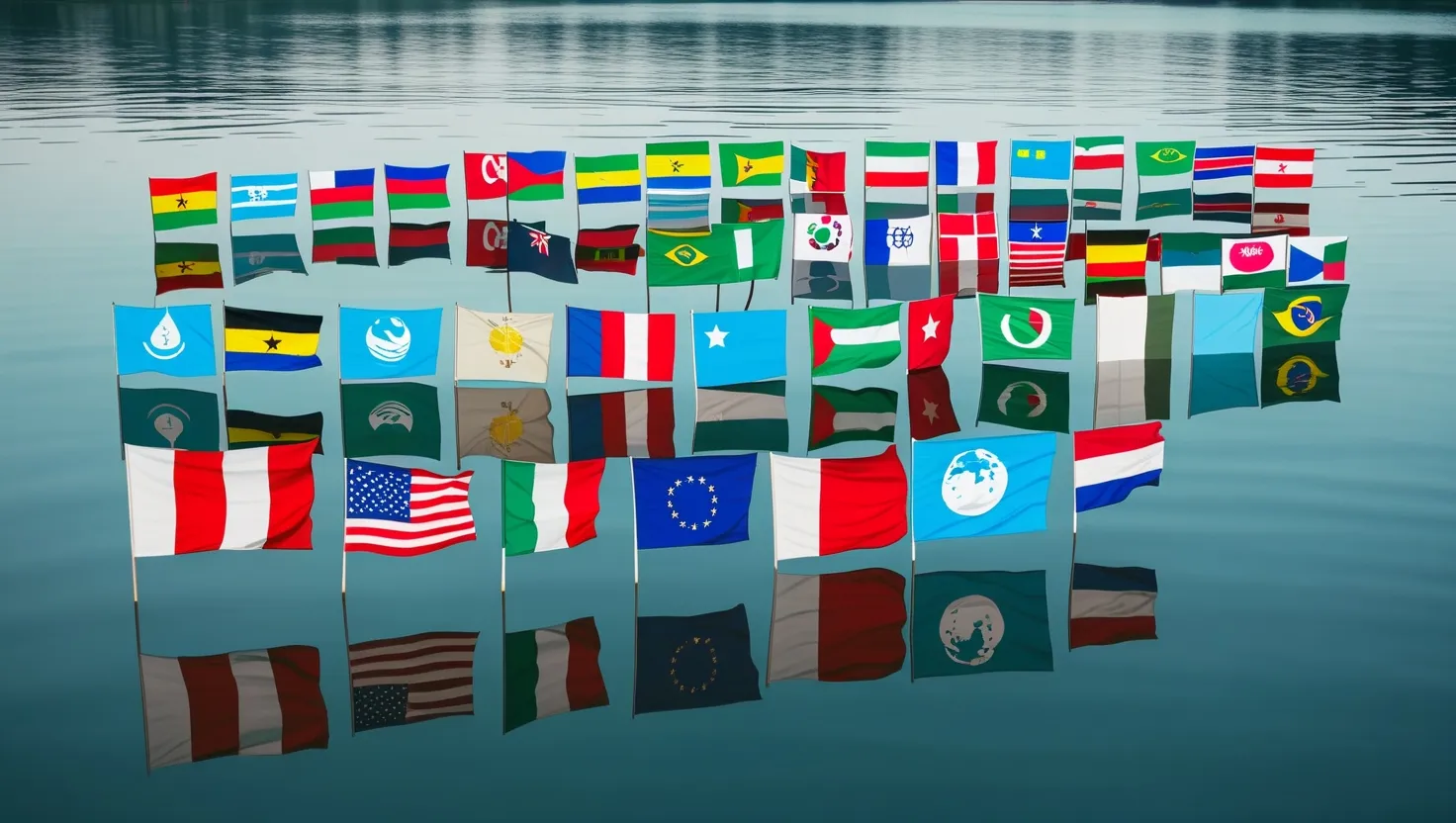As I stand at the edge of a serene lake, the tranquility of the water belies the simmering tensions that often arise over this precious resource. Water, the lifeblood of our planet, has become a contentious issue in international relations, fueling diplomatic tensions, economic challenges, and environmental concerns. Let’s delve into six global water crises that highlight the complex interplay between water scarcity, international law, and the quest for sustainable development.
The Nile River Basin: A Historic Dispute
The Nile River, one of the world’s most iconic waterways, has been at the heart of a longstanding dispute between Egypt, Sudan, and Ethiopia. The roots of this conflict lie in colonial-era agreements that allocated the majority of the Nile’s water to Egypt and Sudan, leaving upstream countries like Ethiopia feeling marginalized and excluded.
“Water is the driving force of all nature,” as Leonardo da Vinci once said. Yet, for the Nile Basin countries, this force has become a source of division rather than unity. Ethiopia’s construction of the Grand Renaissance Dam has sparked fears in Egypt and Sudan about reduced water flows and economic impacts. The dam, while promising to boost Ethiopia’s economy and energy production, has reignited old disputes and created new ones.
Mekong River: The Damming Conundrum
In Southeast Asia, the Mekong River faces a different kind of crisis. The rapid construction of dams along its length has raised concerns about the downstream impacts on fisheries, agriculture, and the livelihoods of millions. These dams, while intended to generate electricity and stimulate economic growth, threaten the delicate ecosystem of the Mekong.
How do we balance the need for energy with the need to preserve natural habitats? The answer lies in cooperative management and careful planning. However, the lack of a unified approach among the Mekong River Basin countries has led to a patchwork of policies, each prioritizing national interests over regional harmony.
Israel-Palestine: Water Disputes in the Jordan River Basin
The Jordan River, a symbol of spiritual and historical significance, is also a battleground for water rights between Israel and Palestine. The dispute here is not just about water allocation but also about control and sovereignty. Israel’s dominance over the region’s water resources has left Palestine struggling to meet its basic water needs.
“Water is life, and clean water means health,” said Audrey Hepburn. For Palestinians, access to clean water is a luxury often denied. The conflict over the Jordan River highlights the need for equitable water distribution and the recognition of water as a human right.
Central Asia’s Aral Sea Crisis
Once the world’s fourth-largest lake, the Aral Sea has shrunk dramatically due to the diversion of its feeder rivers for irrigation. This environmental disaster has had far-reaching consequences, including the loss of livelihoods, increased salinity, and severe health impacts on local populations.
The Aral Sea crisis is a stark reminder of the consequences of unchecked water exploitation. It also underscores the importance of regional cooperation in managing shared water resources. The lack of coordination among Central Asian countries has exacerbated the problem, making it a pressing issue in international relations.
India-Pakistan: The Indus Basin Treaty Challenges
The Indus River Basin, shared by India and Pakistan, is another hotspot of water-related tensions. The Indus Waters Treaty, signed in 1960, has been a cornerstone of cooperation between the two nations, but it has not been immune to challenges. Disputes over dam construction and water allocation have frequently strained relations.
How can two nations with a history of conflict find common ground over water? The answer may lie in the treaty itself, which has survived despite numerous challenges. However, the increasing pressure on water resources due to population growth and climate change demands more innovative and collaborative solutions.
Colorado River: U.S.-Mexico Allocation Issues
In North America, the Colorado River forms the border between the United States and Mexico, but it also divides the two countries in terms of water allocation. The Colorado River Compact of 1928 and subsequent agreements have managed to keep tensions at bay, but the growing water scarcity and climate change are testing these arrangements.
“Nature is not a place to visit. It is home,” as Gary Snyder once said. For the communities along the Colorado River, this home is facing severe water stress. The U.S. and Mexico must work together to ensure sustainable management of this vital resource, considering the impacts of drought and changing climate patterns.
The Role of International Law
International law plays a crucial role in managing transboundary water resources. Treaties and agreements provide a framework for cooperation, but their effectiveness depends on the willingness of nations to adhere to them. The absence of such agreements or the failure to update them can lead to conflicts, as seen in the Nile and Mekong River basins.
What if we had a global water treaty that set universal standards for water sharing and management? While this may seem idealistic, it highlights the need for a more unified approach to water governance.
Climate Change: The Exacerbating Factor
Climate change is the silent antagonist in many of these water crises. It intensifies droughts, alters precipitation patterns, and increases the frequency of extreme weather events. This makes water management even more challenging, as countries must adapt to new and unpredictable conditions.
How can we prepare for a future where water scarcity is the norm? The answer lies in climate-resilient water management strategies that incorporate adaptive planning, efficient use of water resources, and innovative technologies.
Innovative Solutions and Cooperation Mechanisms
Innovative solutions are emerging to address these water crises. For instance, water-saving technologies and efficient irrigation systems can reduce the demand on scarce water resources. Additionally, cooperative mechanisms such as joint water monitoring and early warning systems can help prevent conflicts.
What role can technology play in resolving water disputes? From satellite monitoring to advanced desalination techniques, technology offers numerous solutions that can be shared and implemented across borders.
Water Diplomacy: A Path to Peace
Water diplomacy, the art of using water as a tool for peace, is gaining traction. By fostering dialogue and cooperation over water issues, countries can build trust and resolve conflicts. The Nile Basin Initiative and the Indus Waters Treaty are examples of how water diplomacy can work.
Can water be a catalyst for peace? The answer is yes, but it requires a commitment to cooperation and a willingness to share the benefits and burdens of water management equally.
As we reflect on these global water crises, it becomes clear that water scarcity is not just an environmental issue but a humanitarian and diplomatic one. The path forward involves a combination of international law, innovative solutions, and a commitment to cooperation. By working together, we can ensure that water, the lifeblood of our planet, becomes a source of unity rather than division.
“Water is the lifeblood of our planet, and we must do everything in our power to protect it,” as Robert F. Kennedy Jr. once said. This is not just a moral imperative but a necessity for our collective future. As we move forward, let us remember that the management of water resources is not just about allocation but about ensuring that this precious resource continues to nourish and sustain all life on Earth.






